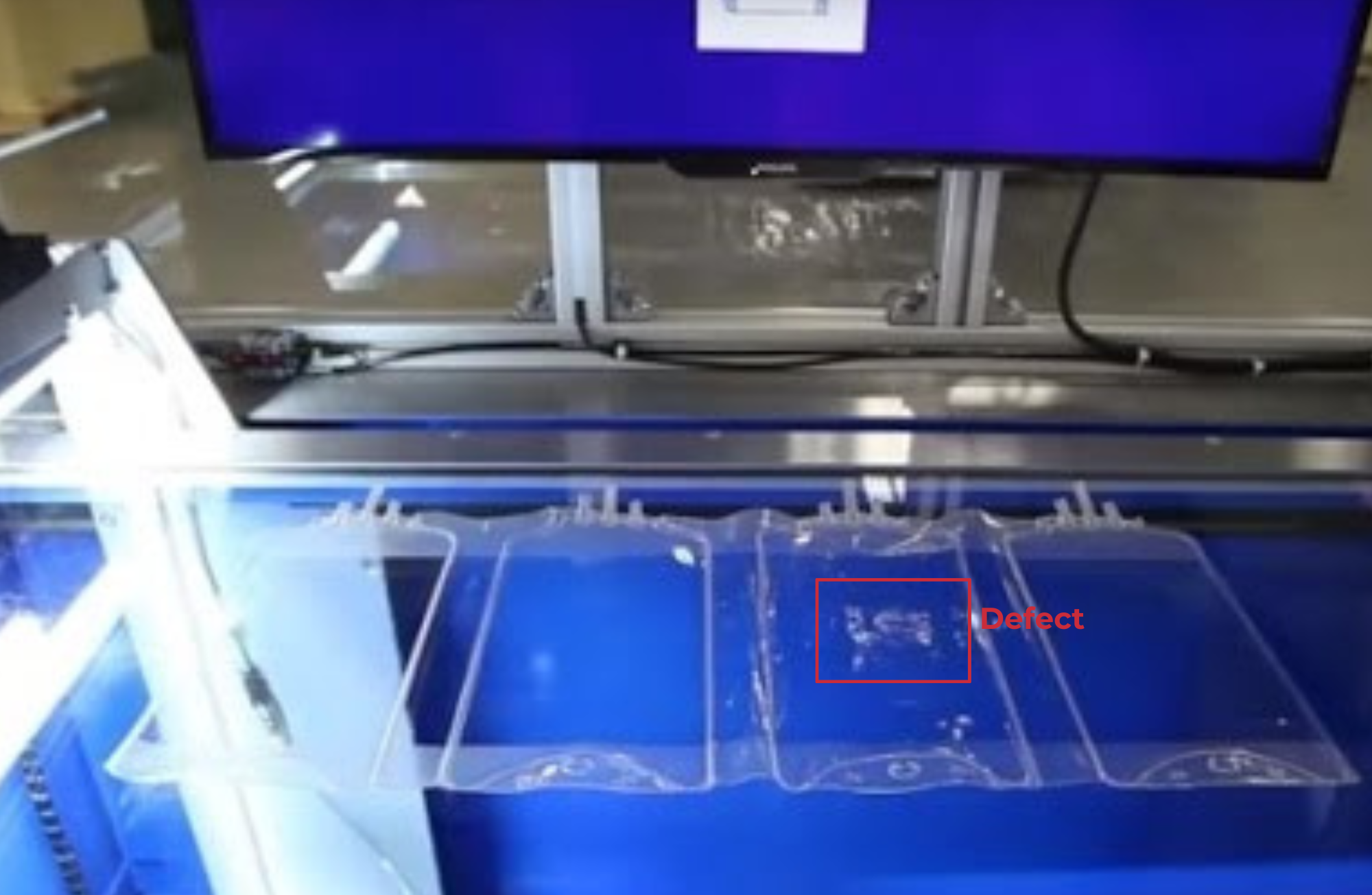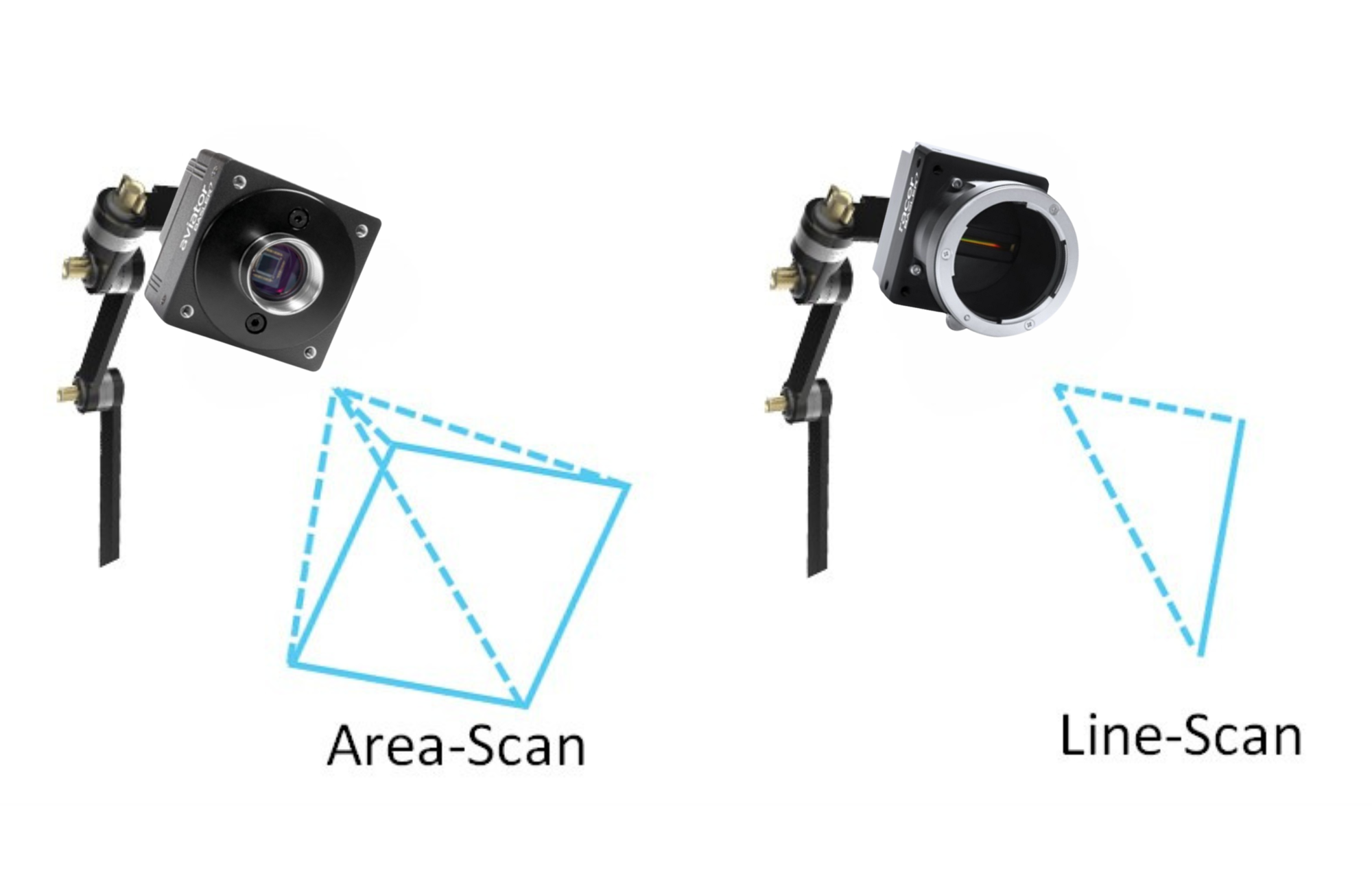Inspection Automation of Transparent and Reflective Medical Pouches Using Machine Vision AOI
Published on: Apr 04, 2025

Written by: Content team, Intelgic
Inspection Automation of Transparent and Reflective Medical Pouches Using Machine Vision AOI
Maintaining sterile barrier integrity is paramount in medical packaging, where microscopic defects—from hair-thin seal channels to sub-50µm pinholes—can compromise patient safety and regulatory compliance. Traditional manual inspection methods, limited by human visual acuity and fatigue, struggle to consistently detect these critical flaws. Automated Optical Inspection (AOI) systems overcome these limitations through high-resolution machine vision that analyzes hundreds of pouches per minute with micron-level precision, utilizing multi-spectral imaging and advanced algorithms to identify even the most subtle defects. This technology not only enhances detection of sterility-compromising flaws but also provides documented quality assurance for regulatory audits, representing a fundamental advancement in medical packaging quality control.
In this article, we'll explore the critical defects that compromise medical pouch sterility, examine how AOI systems detect imperceptible flaws that escape human inspectors, and analyze the transformative advantages of automated quality control.

Common Defects in Medical Pouches Inspection
Medical pouches combine polymer films, foil, or composites with breathable Tyvek®/paper backings. Common defects include:
Seal Integrity Defects:
- Incomplete seals, channels, or voids – May allow leakage, compromising sterility.
- Foreign materials (hair, fibers) – Can create micro-channels.
- Wrinkles, pleats, or folds – Indicate poor sealing.
Pinholes & Punctures:
- Tiny holes (<50 µm) in film/foil can breach sterility
Contamination & Particles:
- Dust, fibers, or black spots inside/on the pouch.
Other Defects:
- Discoloration (overheating), bubbles, delamination, or layer misalignment.
- Trapped air bubbles distort transparency.
Challenges in Inspecting Transparent and Glossy Materials
Transparent and glossy materials present several unique challenges. These challenges must be addressed to ensure accurate and reliable defect detection in medical pouches.
- Low-Contrast Surface Defects on Transparent Films:
- Transparent films allow light to pass through, making surface defects such as scratches, pinholes, and contamination difficult to detect.
- Glare from Reflective Foils:
- Highly reflective materials, such as foil-sealed pouches, create intense glare that can overwhelm camera sensors.
- Varying Surface Angles and Wrinkles in Flexible Materials:
- Medical pouches are often made of flexible materials that shift and wrinkle during movement, altering their surface angles.Wrinkles can obscure defects or create false positives, requiring adaptive imaging algorithms to compensate for material variations.
- Motion Blur in High-Speed Production Lines:
- Automated manufacturing processes operate at high speeds, making it challenging to capture sharp, detailed images without motion blur.
Camera Technologies for Medical Pouch Inspection
Selecting the right imaging technology is essential for accurate inspection. Different camera types serve various inspection needs based on pouch movement and throughput requirements.
- High-Resolution Area Scan Cameras:
- These cameras capture a full 2D image in a single exposure, similar to traditional photography. They are particularly useful for inspecting static pouches that require detailed analysis.
- Equipped with high-resolution sensors, they can detect micro-scratches, seal inconsistencies, and minor surface deformations with exceptional clarity.
- Area scan cameras work best in applications where the pouch remains stationary or moves at a controlled pace, ensuring each section is thoroughly examined.
- High-Speed Line Scan Cameras:
- Unlike area scan cameras, line scan cameras build an image line by line as the object moves, making them ideal for high-speed production lines.
- These cameras feature ultra-high resolutions with precise synchronization to conveyor motion, allowing for seamless defect detection in continuous production environments.
- They are particularly effective for inspecting long or wide reflective sheets where a single large-area image may not provide sufficient detail.
- Contact Image Sensors (CIS):
- CIS technology is designed specifically for inspecting flat, continuous materials such as medical pouch films and foils.
- They offer distortion-free imaging with high uniformity, ensuring that pinholes, contaminants, and surface irregularities are detected with precision.
- These sensors are well-suited for roll-based packaging inspections, where a large scanning area is necessary to capture subtle defects.

Lighting Technologies for Reflective & Transparent Pouches
Lighting plays a crucial role in ensuring defects are visible under machine vision systems. Different lighting techniques help reveal specific defects that might be difficult to see with standard illumination.
- Diffuse Front Lighting (Full Bright-Field Illumination):
- This technique provides uniform illumination by evenly diffusing light over the entire surface of the medical pouch, minimizing harsh reflections and enhancing defect visibility.
- It is especially effective for inspecting shiny, reflective materials such as polymer films and foil pouches, ensuring that inconsistencies in the seal and surface deformations become prominent.
- On-Axis Coaxial Lighting:
- Using a beam-splitter to direct light along the same axis as the camera, coaxial lighting ensures even illumination across the surface of the medical pouch.
- This lighting method is highly effective in detecting surface irregularities, including scratches, indentations, and embossed text on flat reflective materials like foil-sealed pouches.
- Dark-Field Lighting (Angled Grazing Light):
- This technique projects light at a shallow angle, making minor scratches, surface textures, and contaminants stand out vividly.
- Any defect that disrupts the uniform reflection of the surface appears brighter against a dark background, ensuring that micro-imperfections are easily detectable.
- Backlighting:
- Placing a strong light source behind the pouch, backlighting enables the camera to capture transmitted light, making punctures, pinholes, or embedded particles easily visible.
- Opaque defects appear as dark spots, while holes or voids appear as bright spots, allowing for precise defect analysis.
- Polarized Lighting:
- Polarization filters are used to minimize glare and enhance the visibility of defects in shiny or transparent materials.
- This method is particularly effective in reducing reflections on clear pouches and improving contrast in areas where defects might otherwise blend into the background.
Intelligent Defect Recognition with Live Vision AI Software
Intelgic's advanced Live Vision software leverages AI-powered anomaly detection to overcome traditional inspection limitations. Rather than depending only on rigid rule-based algorithms, the system:
- Trains on defect libraries (scratches, pinholes, contaminants) to recognize subtle flaws
- Learns natural seal variations (texture, color gradients) to reduce false rejects
- Adapts to new defect patterns through continuous learning
This approach proves particularly effective for pouch inspection where seal quality assessment requires discriminating between acceptable material variations and actual defects like micro-channels or embedded particles.
System Integration and Customization
Intelgic provides complete integrated systems tailored to pouch inspection challenges:
- Custom mechanical handling (flip mechanisms, dual-camera tunnels for simultaneous front/back inspection)
- Precision lighting enclosures optimized for material reflectivity
- Seamless PLC integration for real-time pass/fail sorting
- Robotic presentation systems for high-speed lines
Innovative Contact Image Sensor (CIS) Technology
For web-based pouch manufacturing, Intelgic implements high-resolution CIS modules that offer distinct advantages:
- Distortion-free imaging through direct-contact linear scanning
- Built-in uniform illumination across entire web width (up to 600mm)
- Seal-line inspection immediately post-sealing with micron-level resolution
- Simplified optics with fixed-focus design eliminating lens adjustments
CIS technology proves ideal for:
✔ Continuous detection of pinholes in foil layers
✔ Contaminant scanning across full web width
✔ High-speed seal integrity verification (>1m/s)
Workflow for Medical Pouch Inspection Using Machine Vision AOI
A structured workflow ensures that medical pouches undergo comprehensive inspection with maximum accuracy and efficiency. The following steps outline the typical process in an automated optical inspection (AOI) system:
- Pouch Alignment:
- Medical pouches are transported on a conveyor or roll-based system to ensure smooth movement through the inspection station.
- Automated guides or robotic arms may be used to align the pouches correctly, ensuring consistent positioning for imaging.
- Camera-Based Image Capture:
- High-resolution area scan, line scan, or contact image sensors (CIS) capture detailed images of the pouch.
- Multiple cameras may be used for different angles, ensuring comprehensive inspection of seals, surfaces, and edges.
- Lighting Optimization for Defect Visibility:
- Specialized lighting techniques (diffuse, coaxial, dark-field, backlighting, or polarized lighting) are applied to enhance defect visibility.
- Adaptive lighting adjustments optimize imaging for transparent, glossy, and reflective materials.
- Image Processing & Defect Detection:
- AI-powered vision algorithms analyze the captured images, identifying defects such as seal inconsistencies, pinholes, contamination, printing errors, and surface deformations.
- Machine learning models differentiate between acceptable variations and critical defects, minimizing false positives.
- Classification & Decision-Making:
- Detected defects are classified based on severity, size, and type (e.g., minor cosmetic flaws vs. critical sterility breaches).
- The system determines whether the pouch meets quality standards or requires rejection.
- Sorting & Rejection Mechanism:
- Defective pouches are automatically flagged for rejection using pneumatic ejectors, robotic arms, or diversion conveyors.
- Approved pouches proceed to packaging, sterilization, or the next stage of processing.
- Data Logging & Reporting:
- Inspection results are logged in a centralized database for traceability and compliance reporting.
- Statistical process control (SPC) analytics help identify trends, allowing manufacturers to address recurring defects and improve quality control.

Advantages of AOI for Reflective Medical Pouch Inspection:
- Superior Defect Detection – Identifies even micron-level flaws (pinholes, scratches, seal defects) in reflective materials that human inspectors often miss.
- Adaptive Lighting & AI – Handles challenging reflections from foil layers using optimized lighting (dark-field, coaxial) and AI-trained anomaly detection.
- High-Speed Accuracy – Inspects hundreds of pouches per minute without fatigue, maintaining tight production line speeds.
- Reduced False Rejects – AOI distinguishes true defects from acceptable material variations (e.g., natural foil grain or minor gloss differences).
- Real-Time Defect Detection – Identifies and flags flaws (pinholes, scratches, seal defects) instantly during production, enabling immediate corrective action and minimizing waste.
- Cost Savings – Reduces material waste and rework costs by catching defects early, while lowering labor expenses through fully automated inspection.
- Custom Configurations – Tailored solutions for unique pouch designs (e.g., dual-sided inspection, robotic handling for high-reflectivity areas).
Intelgic delivers industry-leading AOI solutions that combine real-time defect detection, AI-powered accuracy, and measurable cost savings for medical pouch manufacturers. Our expertise in reflective material inspection ensures:
✔ Zero-defect output with instant flaw detection
✔ Lower operational costs through reduced waste and automation
✔ Seamless compliance with strict regulatory requirements
Transform your inspection process today with Intelgic’s cutting-edge technology.

